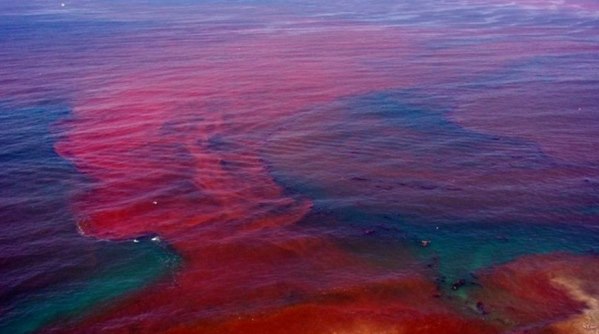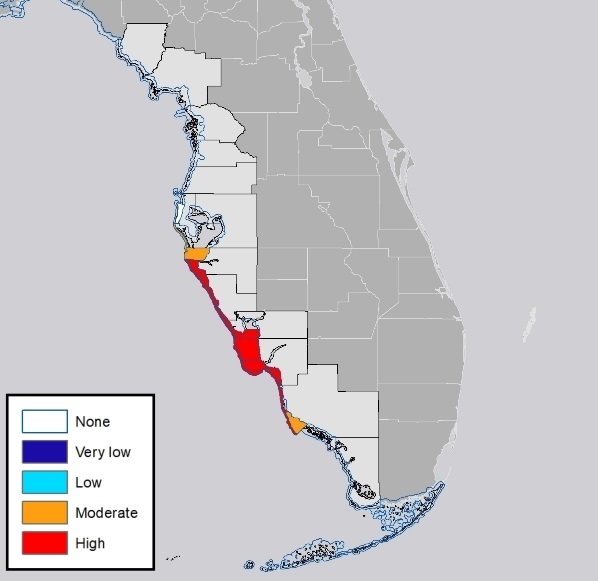Destructive blooms of Karenia brevis, a dinoflagellate species of algae that imparts a red color to ocean waters when the microorganisms grow and accumulate to unusually high quantities, are causing unprecedented environmental and ecosystem damage along the southwestern coast of Florida. Commonly known as red tides, these harmful algal blooms (HABs) deplete the levels of dissolved oxygen in ocean water and produce potent toxins—specific neurotoxins termed brevetoxins—that are poisoning and killing thousands of fish, sea turtles, and marine mammals, including dolphins and manatees. In addition, the harmful algal blooms are having a major economic impact because the beaches and waters affected by the red tides need to be closed to tourists and fishing enthusiasts. In many locations, dead fish and other marine animals are washing up along the southwestern Florida coastline. Compounding this issue, the brevetoxins often impart a foul odor to the air, making these areas quite unattractive. These areas are also potentially harmful to humans. For example, chronic inhalation of the red tide brevetoxins (which can become aerosolized) can result in pulmonary irritation and illnesses in humans. Also, the ingestion of shellfish contaminated by brevetoxins can cause serious gastrointestinal health risks to humans as well. See also: Algae; Cetacea; Chelonia; Ecological communities; Ecology; Ecosystem; Emerging diseases in marine mammals; Environmental toxicology; Fisheries ecology; Marine ecology; Sirenia; Toxin

Karenia brevis is commonly found at low concentrations in Florida's ocean waters throughout the year and does not typically cause long periods of harmful algal blooms. In addition, the red tide phenomenon has been known to exist in the Gulf of Mexico since the 1500s, so it is not an unusual occurrence. In the past, though, high levels of Karenia brevis only occurred during the months of late summer and early autumn, when the ocean's surface waters are at their warmest temperatures. Now, however, the blooms of Karenia brevis are growing to prodigious levels (more than 10 million algal cells per liter of ocean water, compared to normal background levels of less than 1000 cells per liter), are becoming more widespread, and are remaining in place for greater lengths of time; they do not seem to be dissipating. The current crisis has been affecting southwestern Florida since October 2017. See also: Chemical ecology; Gulf of Mexico; Ocean warming

The present-day crisis in Florida is compounded by a number of anthropogenic transformations (that is, environmental alterations resulting from the presence or activities of humans). In particular, higher ocean water temperatures resulting from global climate change contribute greatly to the growth of the Karenia brevis blooms. In addition, at numerous locations in southern Florida, nutrient-rich runoff waters from numerous agricultural enterprises and cattle farms, as well as overflow of polluted waters from residential developments, are being released into estuaries and rivers that lead to the Gulf of Mexico, especially during storm or other flood conditions. The algae thrive on the various nutrients found in these runoff and polluted waters, resulting in greater quantities of harmful Karenia brevis. Still, until efforts are undertaken to reverse some of the underlying causes of the overabundance of Karenia brevis and conditions change dramatically, the red tide phenomenon and its detrimental effects on the waters of southwestern Florida are likely to continue. See also: Ecohydrology; Eutrophication; Global climate change; Global warming; Marine conservation; Water conservation; Water pollution





